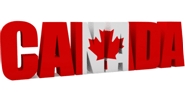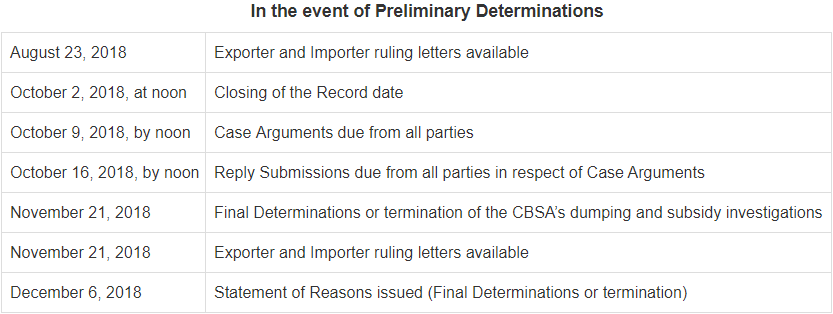Trade Cases

Canada Initiates AD/CVD Investigation into Cold Roll Imports
Written by Sandy Williams
May 29, 2018
The Canada Border Services Agency initiated an investigation on May 25 into the dumping and subsidizing of certain cold-rolled steels in coils or cut lengths from China, South Korea, and Vietnam.
The investigation was prompted by a complaint from ArcelorMittal Dofasco. Cold rolled imports under the investigation increased from 85,075 metric tons in 2015 to 133,440 tons in 2016, and 146,116 tons in 2017. ArcelorMittal states that the subject imports captured over one-third of the Canadian market in only three years by undercutting domestic pricing and depressing margins.
The problem has been compounded by excess capacity in the steel and cold rolled sectors, especially in China, and weak market demand in China, Korea and Vietnam. Exports of CRS are expected to increase from China and Korea in 2018 and 2019. Vietnam is increasing capacity with two mills that were expected to come on line last year.
In its complaint ArcelorMittal Dofasco stated: “The imposition by the United States of tariffs on Chinese and Vietnamese CRS as a result of the section 232 investigation, and the agreement by Korea to reduce steel shipments to the United States by 30 percent, has created an incendiary situation, threatening to exacerbate the turmoil in global steel markets and divert increasing volumes of CRS to the Canadian market.”
A safeguard inquiry regarding CRS initiated by the European Commission in late March 2018 is expected to worsen the problem for Canada.
“These circumstances pose an unprecedented threat of injury to the Canadian domestic industry,” added Dofasco.
The complaint was supported by letters from Algoma and Stelco, who with ArcelorMittal Dofasco represent 100 percent of the Canadian production of cold rolled steel.
A statement of reasons regarding the initiation of the investigation will be released on June 8. Importer responses to CBSA are due by June 18 and exporter and government responses by July 3.
A preliminary determination will be made by Aug. 23 with reasons to follow by September. If an affirmative determination is made by CBSA, the following schedule for the investigation will be implemented.

Sandy Williams
Read more from Sandy WilliamsLatest in Trade Cases

SMU Survey: Less support seen for Trump tariff policies
Meanwhile, an increasing number think it's too early to say whether the penalties are going to bring more manufacturing to the US.

CRU: USW seeks exclusion for Canada from Trump’s tariffs
The union is also urging stronger enforcement against countries such as China which break trade rules, and a coordinated Canada-US strategy to protect union jobs across the North America

Price on trade: A lot happened last week – and it wasn’t all about tariffs
Should foreign investment be allowed to reshape the American steel Industry? Not to be lost in the recent on-again-off-again tariff frenzy, Nippon Steel’s proposed takeover of U.S. Steel has also found itself in President Trump’s crosshairs when it comes to trade and industrial policy. Nippon Steel initially announced its nearly $15-billion bid for U.S. Steel […]

Trump signs executive order aimed at making US shipbuilding ‘great again’
President Trump on Wednesday signed an executive order meant to breathe new life into American shipbuilding and curb Chinese dominance in the sector.

Trump still against selling USS to Japanese firm: Report
Despite ordering a new review of Nippon Steel’s bid for U.S. Steel, President Trump said he is still against selling USS to a Japanese company, according to media reports.

